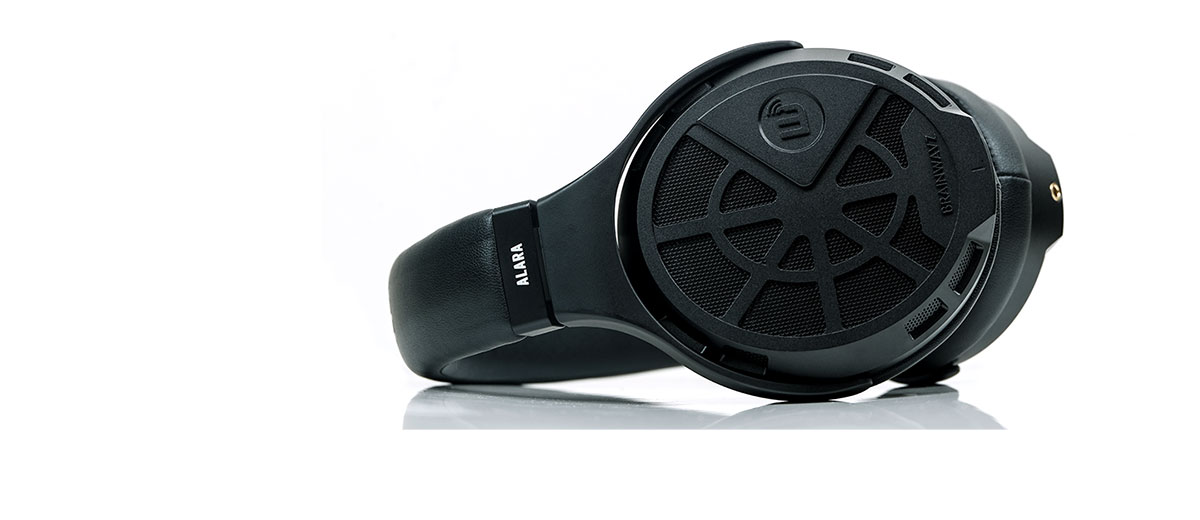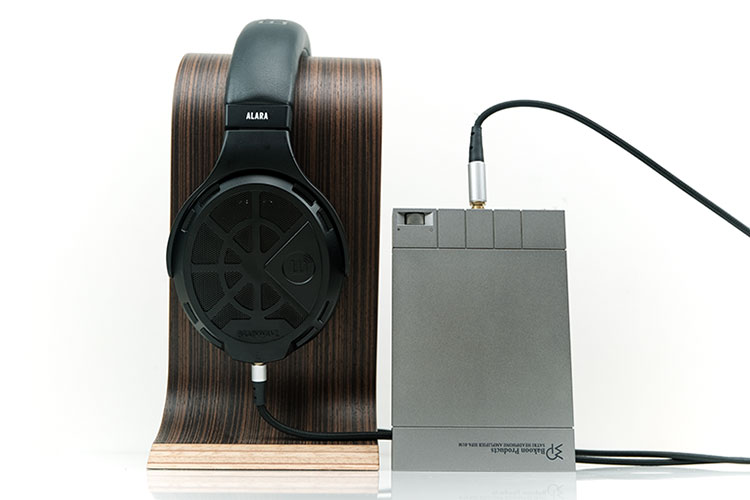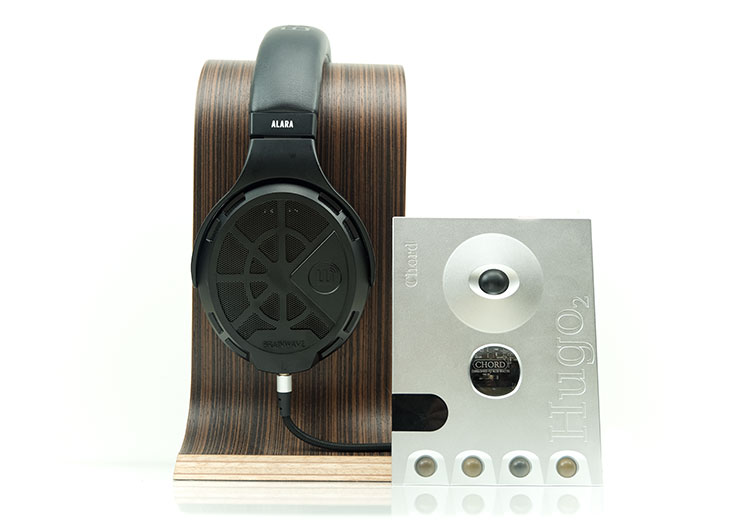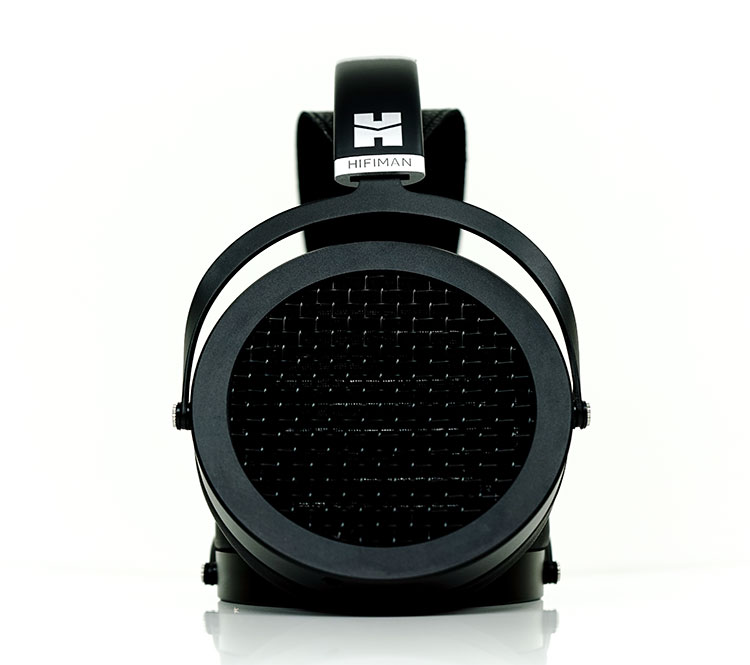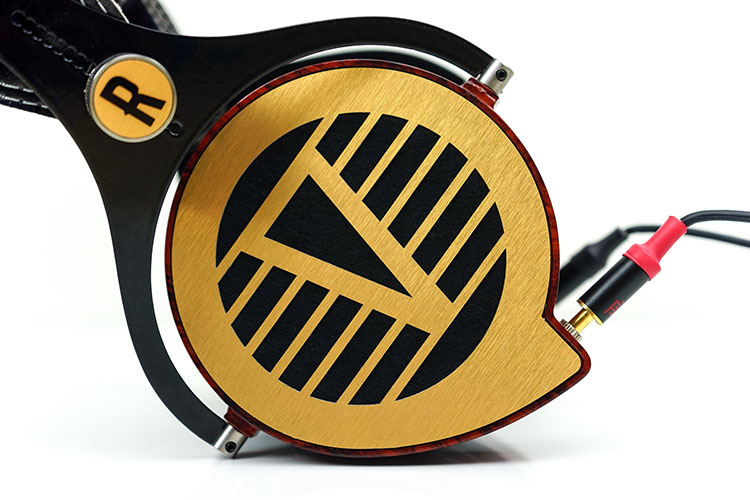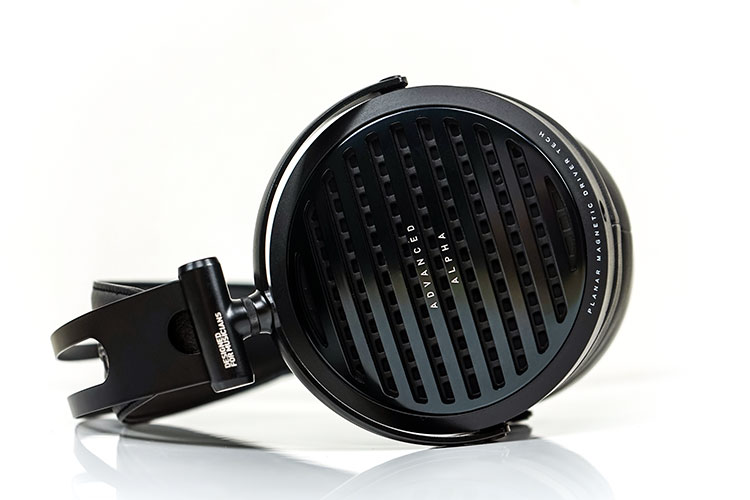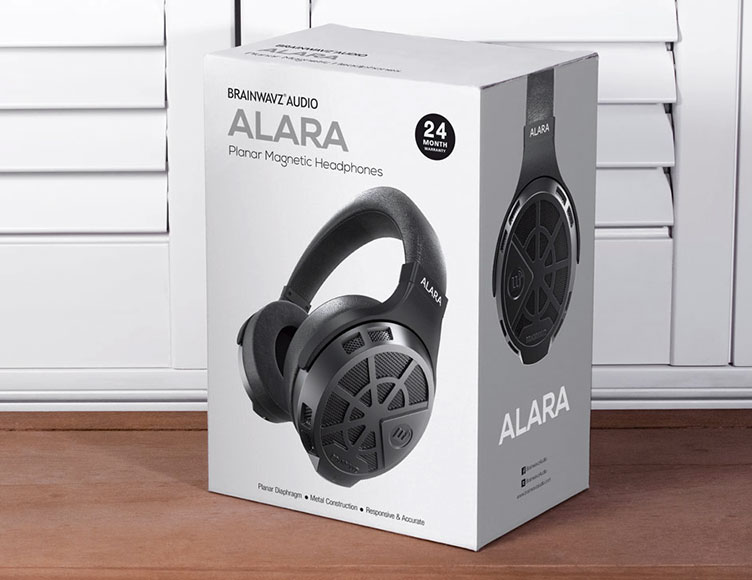Sound Impressions
Summary
The Alara has all the hallmarks of a well-engineered planar response with a balanced low to midrange performance up to 1k then an expected minor dip and rise from 1-3k. The Alara has two focused peaks at both 4k and 8k with a fairly stable lower presence.
In a way, it reminds me a little of that ‘exciting’ Advanced Alpha upper mids rise but with the Alara it is much less strident with a slightly wetter timbre. Some of that wetness and warmth comes from what seems to be a slight mid-bass elevation around the 100Hz that retains a gentle lift into the lower-mids.
The Alara tuning thus strikes a nicely balanced tuning with that pure planar bass response and a hint of low-end warmth combined with a forward and clear vocal presence as well as an exciting sounding treble signature. You get plenty of crunch and clarity in its timbre but its not harsh and certainly not lacking in a solid bass fundamental.
This is not a wholly neutral tuning, there is enough focus in key areas to position the Alara closer to the musical and punchy side of the spectrum.
Soundstage
It is perhaps a wise move by Brainwavz to keep the timbre relatively clean and natural sounding because the soundstage is more on the intimate side of things. You get decent depth, the clarity to 20hZ is actually very good even if the physicality drops a little in comparison to the 100Hz rise.
However, it is a little on the close side with width also being a little restricted though not in a congested or veiled manner. Rather the pronounced upper mids brings a lot of percussion timbre and higher pitched vocal harmonics front and center.
That forward and strong presence pulls the soundstages forward to back rather than out and wide. Combine that with the clean timbre and good instrumental separation you will hear plenty of detail and some nice and quick imaging within that soundstage.
Height is actually quite ok on the Alara. It reminds me a little of the Ether 2 treble tuning with a decent level of elevation up to 8k to add some sparkle and air but not so spikey to kill the balance. It may not have the extension of the Sundara as it rolls off in performance beyond that but definitely airier than the AEON.
Bass
It is not quite the flat linear bass response of the Sundara or the majestic Ether 2. The Alara tuning has a gentle elevation from 50Hz to 150Hz that delivers some warmth into its presentation compared to sub-bass power.
Not that the Alara is rolled-off. Its sub-bass clarity and definition is quite good. Rather it just lacks a little more quantity compared to its mid-bass presence.
Thus, the Alara low-end is more about ‘pace and punch’ than ‘gut-wrenching’ and deep; you will not find D8000 levels of pure sub-bass power here. However, the PRaT is really nice with a solid enough fundamental for guitar work to sound harmonically planted which is my favorite aspect of the Alara alongside the vocal presence.
Mids
There is a small perceptible rise from 500hZ up to 1k rather than dead flat. This nuanced rise brings out that lower-mids instrumental and male vocal presence. Male vocals in particular never seem to struggle for space with the Alara.
In truth, the lower mids on the Alara are musical, fun and addictive sounding at times. Lovers of strong rock guitar, especially chugging rhythm chord sequences and bass guitar thumb plucks will enjoy both the presence and harmonic balance on the Alara.
There is enough warmth and forward presence combined with that forward upper mids and treble energy in the Alara’s timbre to create notes that sound firmly planted yet with enough of an edge and fast enough decay to sound clean and very clear.
Just throw on Arch Enemy’s “The Eagle Flies Alone” (2017) to get a clear idea of how solid those guitar chops sound yet never overpower White-Gluz’s stunning death growls. A very energetic performance for me.
Actually, female vocals on the Alara successfully avoid that slightly strident and edgy sound on the Advanced Alpha. The upper mids do have a forward presence but they sound a little smoother and more liquid than the Alpa.
Treble
Treble for the most part on the Alara is actually quite balanced with a 5-7k line slightly more neutral in presence than the upper mids and treble.
The upper treble around 8k will inject a healthy dose of upper harmonic presence when called upon. Certainly, percussion timbre has plenty of snap and presence and there are times that the upper mids and lower treble can sound a little steely and slightly odd-harmonic dominant on the Alara. I did find however this is largely depending on the tracks and source being used.
For example, the Lotoo PAW Gold Touch is quite neutral save for a little bias to lower treble. Def Leppard’s remastered “Animal” has a lot of loudness injected in it and a slightly brighter production. Combine these two and it is very clean and clear but can trip up on treble sensitive gear. You will hear that slight steeliness inherent in a lot of planar designs here.
What offsets it is the decent levels of body in the Alara’s treble notes combined with a slightly shorter decay. It prevents everything sounding splashy and lean and overly distracting even if slightly forward.
My recommendation here is EQ down the 4k and 8k bumps if you have a bright source. Otherwise, use something with a little more roll-off than the LPGT such as the HiBy R6 Pro as your portable source. The balance on the R6 Pro/Alara treble is spot on for my tastes with a softer attack and good body. If going desktop then tube amps can be a glorious match.
Matchability
Efficiency
The Alara is rated at 20Ω and 94dB. I wouldn’t advise smartphone pairing as the volume on my own LG G6 was largely inadequate at full blast. The Alara does need a bit more headroom than that.
However, our initial impressions are that it is not as inefficient as the Sundara and less sensitive than the MrSpeakers AEON. I was able to push plenty of volume and power via the tube single-ended output of the Cayin N8 flagship DAP and no issues either with our current favorite DAP, the Lotoo PAW Gold Touch.
The unbalanced output of the N8 delivers 200mW into a 32Ω load so I am getting roughly 250-300mW with this pairing and the Alara sounded just fine with that amount of power. Even more so with the 500mW balanced output of the Lotoo Touch.
If the N8 is beyond your budget then our testing on the $149 Cayin N3 in high-gain was positive also. This is a 130 mW + 130 mW into 32Ω so our guess is anything above 100mW output power for the Alara may be enough for decent volume.
Everything higher or different could well be more personal preference and a greater focus on the Alara’s dynamic range potential.
Portable Synergy
Out of the portable sources tested I found the HiBy R6 Pro, Sony 1z and especially the Cayin N8 to pair the best with the Alara. The N8 especially due to the excellent levels of detail, dynamic headroom, and power.
Also, the Cayin N8 timbre with the tube 3.5mm output had a more liquid and smoother tone that mirrored my preferred desktop tube amp, the Auris HA-2SE using the Alara. You might lose a little bite with both outputs but the overall presentation remains punchy and smooth to my ear.
The Lotoo PAW Gold Touch was equally punchy and that bite came back but the higher pitched timbre had a slightly steelier sound that became pervasive on high energy rock percussion notes and some vocals. A good example is Bonfire’s “On the wings of an angel” which has a very clean percussion attack. The cymbal crashes just felt a little too hard with the Touch and wetter and smoother with the N8.
The HiBy R6 pro was a good pairing further down the chain with plenty of power and headroom. The odd time tambourine shakes had a slight glare to them but what I love about the R6 Pro is that MSEB DSP option. A touch of ‘Note thickness’ and ‘Warm/dark’ sorted out any issues I had with the Alara treble body and smoothness. A very flexible pairing.
Desktop Synergy
Desktop amping is really going to depend on your system setup. I would advise a clean DAC with at least 2V output line-out and a sweet-sounding amp. Both my own preferred amps, the Auris HA-2SE tube amp and the Xi Audio Formula S sounded great with the Alara though with slight tonal differences.
The Formula S sounded the punchier of the two with a very natural timbre using an Oppo Sabre Sonica DAC. Of all the desktop amps the Alara top-end sounded just right with the Alara. The Auris HA-2SE was even more liquid and smooth sounding but took a tiny bit of bite away that I preferred from the Formula S.
Portable Amping Synergy
If you still happen to have the Bakoon HPA-01M then its current mode output is more than capable with a decent DAC. Using the line-out of the Hugo 2 we got a fairly linear sound with bags of detail and a clean and nicely control treble. You may miss a bit of low-end warmth with this pairing in current mode. If you need it then voltage mode on the Bakoon will give you a bit more ‘bounce for the ounce’.
Smaller portable amps such as the ALO Audio V5 and the FiiO Q5 have no issues with headroom or current either when paired with the Alara. I did enjoy the sweeter tone of the V5 with the Alara though the Q5 seemed the punchier of the two pairings.
Select Comparisons
Hifiman Sundara
$499 ($349 Special as of Feb 2019)
Technical
The Sundara has a more traditional headphone design than the Alara. I do think the Alara is a more robust design and can take a bit more of a beating than the Hifiman.
Both have their quirks with the Alara simply being too long and the Sundara being too stiff with more clamp on the side. Neither headphone is a perfect sit but the Sundara just shades it with the lighter design at 370g compared to 430g.
The Sundara is rated at 37Ω and 94db sensitivity compared to the Alara at 20Ω and also 94dB. In truth, the Sundara is a good bit harder to drive and those specs are slightly misleading. I was using maybe a 2530% differential on volume via FooBar out to an Oppo DAC/HA-2SE set up to get a volume match.
Performance
The Sundara is a good deal more neutral in its tuning with a more linear and flatter low-end. It is also more open sounding with a fairly spacious soundstage that is quite a contrast from the more intimate but lively Alara (and the darker Verum 1 described below).
Sub-bass has a touch more presence than the Alara but it has less mid-bass elevation and warmth creating that more neutral sounding instrumental timbre and general tone. If anything, the bass to mids transition is a little smoother on the Sundara than the Alara but on the flipside, the Alara is punchier and more musical sounding with that elevated mid-bass tuning.
Mids on the Sundara benefit from that more open soundstage with better left/right separation and a more out of your head experience. The Alara is more upfront with a more forward female vocal positioning and a little more warmth to its instrumental timbre. Male or lower-pitched vocals seem just a touch behind on the Alara and whilst they sound a little warmer they do not quite have the same level of space afforded to them compared to the Sundara.
Upper mids and lower-treble sound a bit more forward with more body on the Alara but it does not extend as far as the Sundara nor does it sound as airy. Both have that slight steeliness to their percussion timbre in the lower treble but the dB lift in the Sundara is not quite as high from 4-7k so it tends to sit back a little more than the more aggressive Alara.
Verum Audio Verum 1
$349
Technical
The Verum 1 is 100% boutique and is the polar opposite in look and feel with a very Eastern European lavish gold and brown veneer design. The Alara is much more subdued with some industrial black chick. I do think the Alara is a better build overall and should stand the test of time. It is too early for the Verum 1 to know but it is holding well almost one year on.
The Verum 1 is the much heavier of the two at 53g compared to 430g. You can feel that difference. However, the pressure balance is excellent with just the right height on the headband and depth on the cups to sit nicely on the head. The Alara is for big heads (so far) and I am not a big head so slightly less comfortable for me.
The Verum 1 is rated at 12Ω and 96dB and both are almost the same in terms of output and current power demands. I had very little tweaking to do to match them volume-wise. If anything, you might be turning up the volume a little more on the Verum 1 because it is more laid back sounding.
Performance
The Verum 1 casts a deeper soundstage with more width but also a more neutral to relaxed upper midrange and a slightly shelved-down treble. In comparison, the Alara is more intimate and aggressive sounding. The Alara does not extend as deep or sound as open but it is a little punchier sounding with a more forward vocal and treble presence.
Another big difference between the two is the upper mids and treble. Both have a 2k dip but unlike the Alara which gets a big boost in the upper mids around 4k the Verum 1 is more restrained and stays that way throughout the treble.
The Verum 1 will come across as more laid back and a little darker in comparison to the Alara. Cymbal crashes will have less bite and some higher pitched vocals will be positioned much further back. By contrast, the Alara is more forward sounding with much more percussion presence and sparkle.
Here I find it a question of preference. The Verum 1 is more forgiving and smoother on the ear whereas the Alara sounds the cleaner and punchier but could also be a bit harder or steelier sounding depending on the source.
Advanced Alpha
$499
Technical
Like the Sundara, the Alpha is a more traditional rounded cup design compared to the slightly elongated Alara. Both headphones have an industrial aesthetic with an all-black metal alloy finish though the Alpha headband system is a leather strap design like Sundara only a bit heavier and thicker.
Both weigh almost the same though the fitting is very different. There is very little downward pressure on the Alpha compared to the Alara with a much stronger clamp and sideways pressure. The pressure is offset by some deep and very comfy pads on the Alpha. The Alara is just a little too long but clamps a lot less. It may clamp more on bigger heads.
Both use 3.5mm stereo detachable cable systems but the 1.2m Alpha cable is weak sauce compared to the much longer and better finished 2m cable of the Alara.
The Alpha is rated at 34Ω and 90dB SPL and does require a little more power and current than the Alara to reach similar volume levels and optimal driving. The Alpha scales a little better with good amps.
Performance
The key differences in their tuning are the low-end where the Alpha is a little flatter and not as punchy sounding and the upper mids and treble where the Alara is a little more aggressive and intimate sounding.
The Alpha lacks that mid-bass warmth of the Alara which I think it is important because instrumental timbre on the Alpha sounds a little leaner and not as authoritative by comparison for guitar and lower-pitched instruments. In short, the PRaT is a little bit better on the Alara.
Both have a similar midrange dip and upper midrange rise though the Alpha starts a little earlier around 3k compared to the Alara at 4k. Vocals have a bit more warmth and body on the Alara compared to the Alpha.
Treble is a bit more uneven sounding on the Alpha compared to the Alara. The Alara sounds the more aggressive with more percussion presence but has the slightly better body than the thinner sounding Alpha. Both can fatigue on the wrong setup and both do much better with sweeter sounding solid-state or tube setups.
Our Verdict
The Brainwavz Alara is a punchy and vibrant sounding planar headphone. It has an air of musicality, a more aggressive and intimate presentation that is well suited to ballsy hard rock than anything else.
It can fatigue a little without the right setup due to that peppy upper mids and treble. A nice set of tubes or sweet sounding solid-state will sort that out or an R6 Pro with MSEB activated. It drives well with most portable sources with decent power so desktops are not a must.
I think the price is spot on and does offer a nice alternative out there to the likes of the Sundara and Alpha which have similar SRP’s. The build quality is to a professional standard and I highly doubt it will fall apart at the first knock. I would love the fit to be a little shorter though for smaller heads. If you have a big head then carry on!
Overall, a professional planar debut from Brainwavz and a surprisingly good one for me who is used to the tried and trusted names in this market over the last few years.
Alara Specifications
- Drivers: Planar Diaphragm
- Rated Impedance: 20 Ω
- Sensitivity : 94 dB at 1 mW
- Frequency range: 10 Hz ~ 40 KHz
- Max Input Power : 300 mW
- Cable: 2 m, Detachable
- Plug: 3.5 mm, Gold plated

